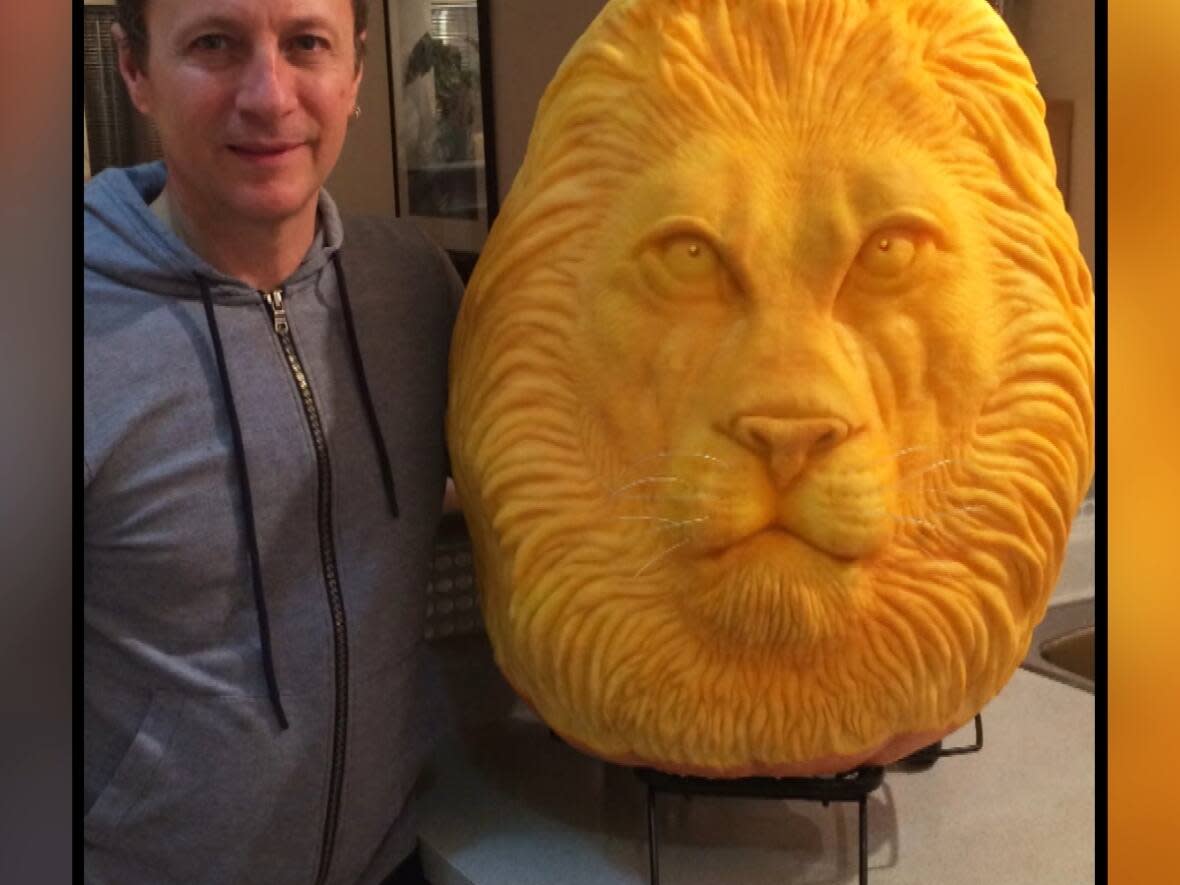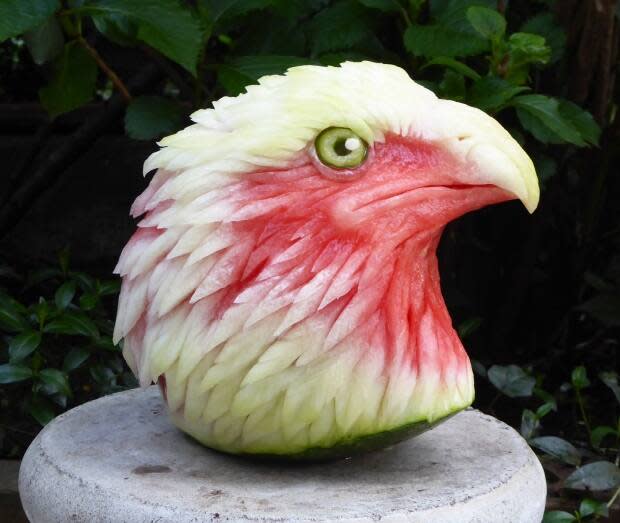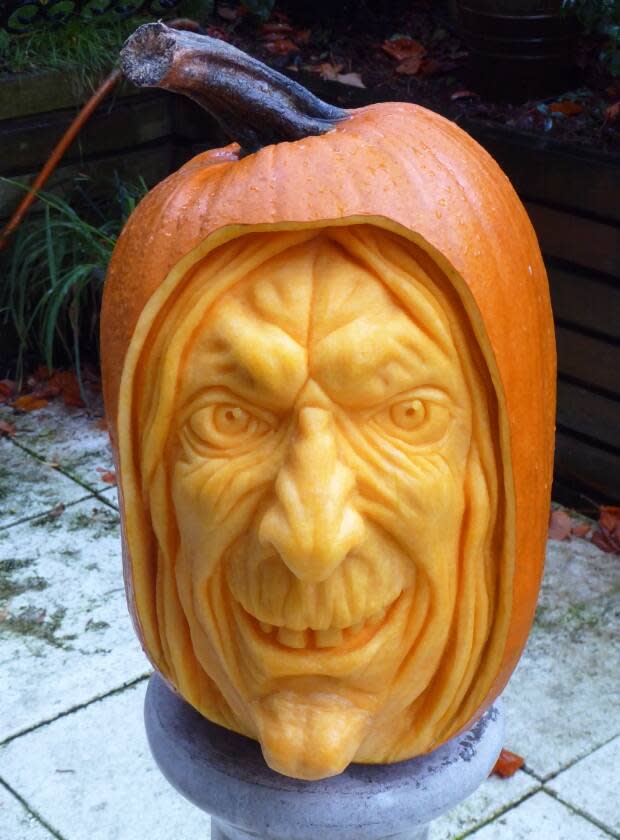Pumpkin carving artist shares his tips on creating a ghoulish gourd

As Halloween draws near, pumpkins are beginning to appear on doorsteps, some carved in the classic jack-o-lantern style, others with intricate designs.
B.C. pumpkin carver and artist Clive Cooper has been carving pumpkins into elaborate shapes and characters for decades. He says sometimes the shape of a pumpkin "tells" him what he should carve into it, other times, he just rolls with whatever inspires him.
"I love sci-fi movies and something will catch my eye and I'll go, oh yeah, I'd like to do something like that," he said.
"Then I'll look for a pumpkin and I'll produce that."
Cooper shared some of his tips for pumpkin carving with The Early Edition's host, Stephen Quinn.
No pumpkin? No problem
If your local pumpkin farmer or grocer has run out of pumpkins by the time you get there, don't fret — pumpkins aren't the only vegetable, or fruit, that can be carved up. In fact, Cooper says he also carves watermelons.

An old Irish tradition predating the pumpkin was carving turnips.
Ancient Celts carved hollowed-out turnips and placed them outside their doors at night for Samhain, a religious pagan festival in which Halloween has roots, to ward off evil spirits.
Turnips, Cooper said, are the only vegetable he hasn't tried carving.
"They're relatively small and they're pretty hard," he said. "So they wouldn't be very good to carve, really, I don't think."
Buff your pumpkin
Cooper's pumpkins all have a waxy, shiny finish to them. The secret, he says, is buffing them with a green Scotch pad.
"It doesn't take much off, but it smooths all that bumpiness and wrinkles out," he said.

Spritz the pad with water to make it slightly wet and "sand" the pumpkin down when you're finished your carving.
Some people also try to preserve their pumpkins, but Cooper says unless you have "gallons" of vinegar to put the pumpkin into, it won't work. Instead, he said, enjoy it before it gets mushy, which could be anywhere from a couple of days to a couple of weeks.
Have fun
The most important part of pumpkin carving, Cooper said, is having fun and learning each time you carve.
He said the more you practise, the better you become.
"The first time I did a nose or an ear, oh, it looked terrible. But then I actually looked at a nose and the shape of it. And then the next time I did a pumpkin, I did a better nose."

Cooper suggests starting with a subject matter you enjoy, for example, a cartoon character that isn't particularly complicated.
"Don't worry if it doesn't turn out exactly what you want," he said.
"I have more failures than I have good ones. I just don't show the bad ones."
LISTEN | Clive Cooper on how to carve a great pumpkin


